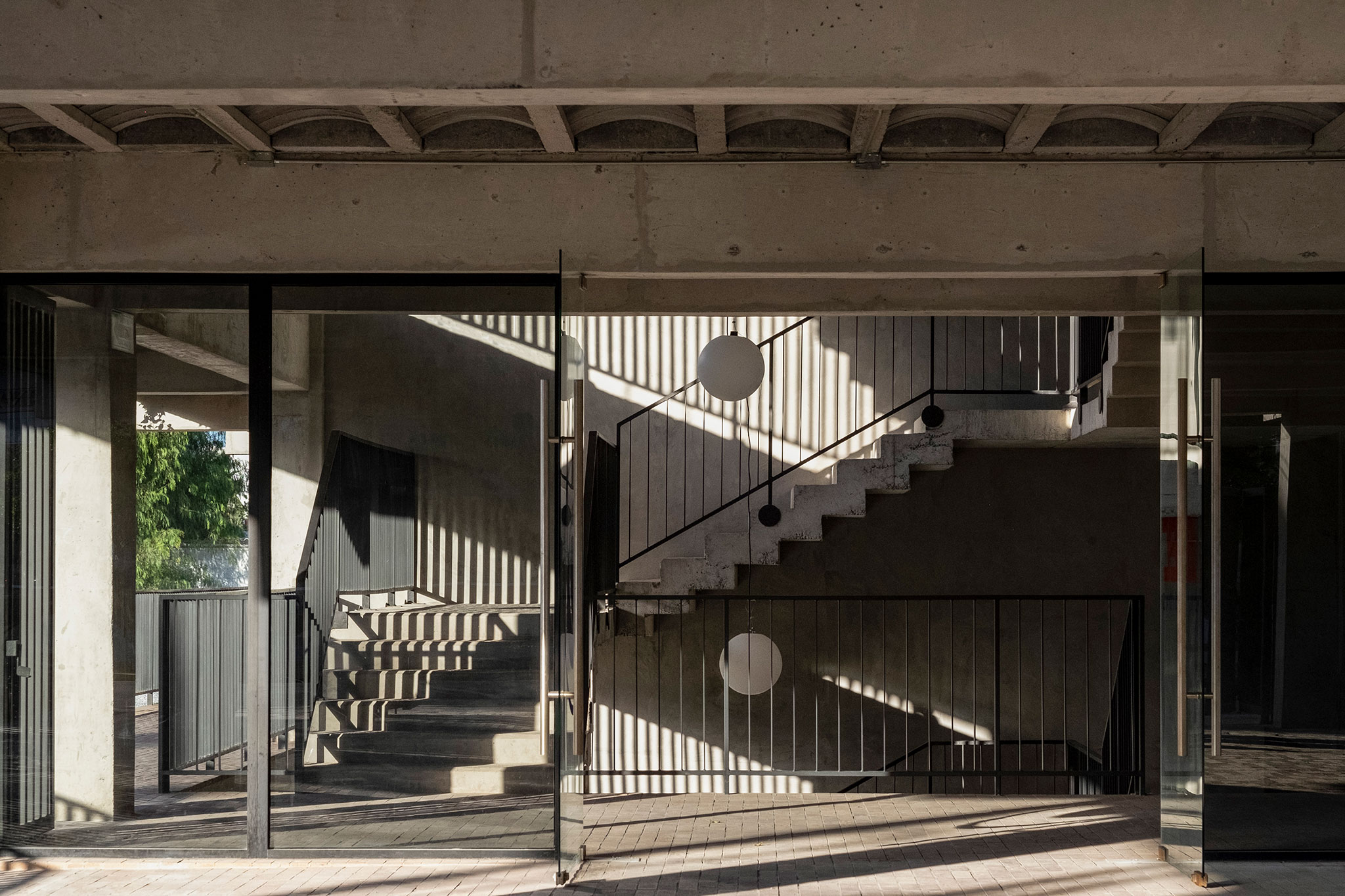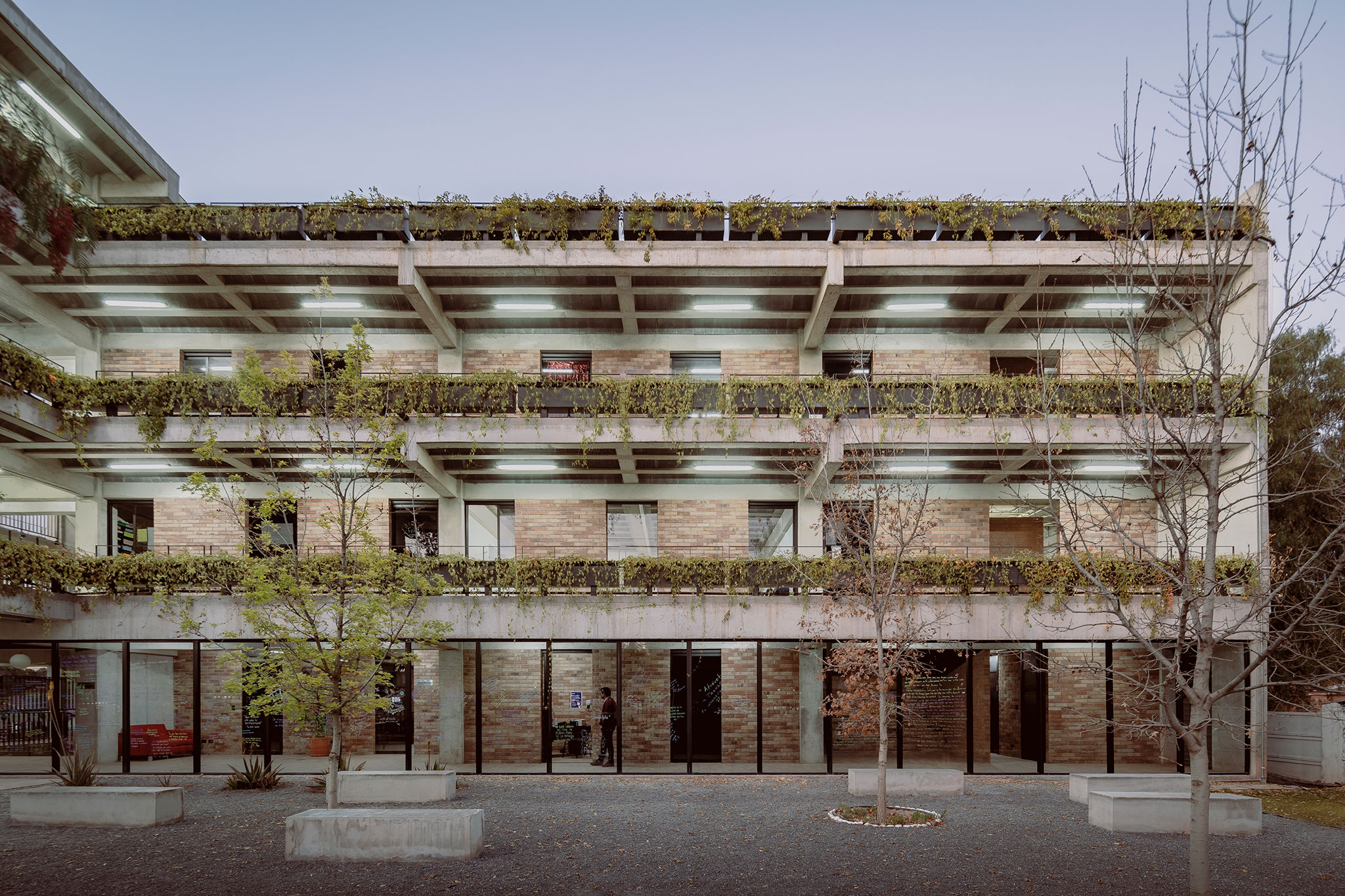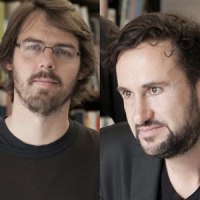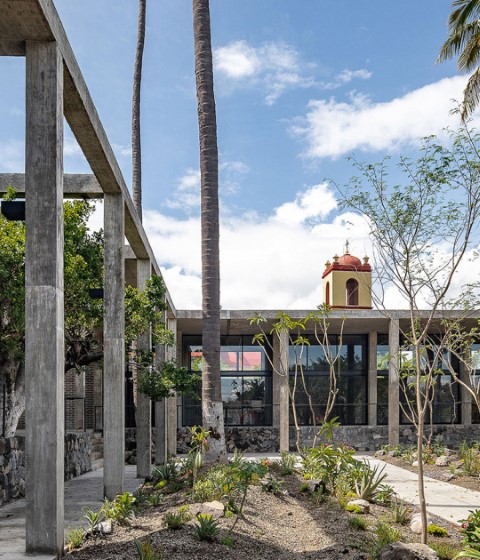The first phase is built in a "T" shaped building that houses the program's main uses: administration, study rooms, and multiple spaces. The structure is made of reinforced concrete and exposed brick walls, generating an image of highly expressive formal minimalism.
When the following phases of the complex are developed, an agora will be delimited that will be the center of activity, meetings, and life of the campus in which the sciences and the arts will be able to intersect.

Project description by Dellekamp/Schleich
In search of the utopia of accessible knowledge, an enthusiastic director decides to bet on a new campus where applied arts and technical learning can interact.
The campus is located within a university zone on two of Saltillo’s most important roads, so the strategy was to create a programmatic threshold that would connect the different scales of the city with the campus to obtain a common spot.
Given the budget limitations, and in accordance with the principles of art povera, the maximum use of resources was the starting point for this project. In this way, the architectural expression is governed by the structure, while the elements are reduced to a minimum, in order to conserve only what is fundamental. The aesthetics are a direct consequence of the raw, low-maintenance materials, creating a language that speaks of simplicity and the passage of time.

IESEC University by Dellekamp/Schleich. Photograph by Sandra Pereznieto.

IESEC University by Dellekamp/Schleich. Photograph by César Béjar.
On the other hand, the idea of a replicable system, as well as the approach of a series of stages, were key to developing a set that will be built as more resources are obtained.
The first phase consists of a T-shaped building that houses the main needs of administration, classrooms, and multiple spaces. The building is based on a reinforced concrete structure with an apparent slab and partition walls to achieve an austere architecture, which allows users to appropriate it.
When the ensemble is completed, an agora will be delimited, taking up the permanent and the fleeting to articulate the spaces, as well as to create a meeting place for the students, where the different expressive languages of science and the arts converge.
































































